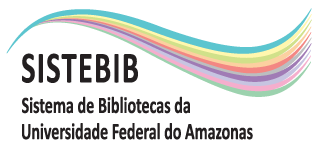| ???jsp.display-item.social.title??? |


|
Please use this identifier to cite or link to this item:
https://tede.ufam.edu.br/handle/tede/10692Full metadata record
| DC Field | Value | Language |
|---|---|---|
| dc.creator | Filgueira, Maria Terezinha Neves | - |
| dc.creator.Lattes | http://lattes.cnpq.br/6054024177059220 | eng |
| dc.contributor.advisor1 | Garcia, Fabiane Maia | - |
| dc.contributor.advisor1Lattes | http://lattes.cnpq.br/0062882509525303 | eng |
| dc.contributor.advisor-co1 | Quintino, Fernanda Pinto de Aragão | - |
| dc.contributor.advisor-co1Lattes | http://lattes.cnpq.br/7123068740517454 | eng |
| dc.contributor.referee2 | Oliveira, Meire Terezinha Silva Botelho de | - |
| dc.contributor.referee2Lattes | http://lattes.cnpq.br/5482600740372808 | eng |
| dc.contributor.referee3 | Borges, Heloisa da Silva | - |
| dc.contributor.referee3Lattes | http://lattes.cnpq.br/9429409939324333 | eng |
| dc.date.issued | 2024-10-29 | - |
| dc.identifier.citation | FILGUEIRA, Maria Terezinha Neves. O uso das tecnologias digitais de informação e comunicação no contexto amazônico: a trajetória do Projeto “Aula em Casa” no município de Jutaí/AM. 2024. 150f. Dissertação (Mestrado em Educação) - Universidade Federal do Amazonas, Manaus (AM), 2024. | eng |
| dc.identifier.uri | https://tede.ufam.edu.br/handle/tede/10692 | - |
| dc.description.resumo | A pesquisa investiga o uso das Tecnologias Digitais de Informação e Comunicação (TDIC) no contexto educacional do município de Jutaí localizado no Estado Amazonas, na região norte do Brasil, especificamente por meio do projeto “Aula em Casa” durante a pandemia de COVID-19. O estudo aponta o contraste das demandas tecnológicas com as singularidades amazônicas, questionando como as TDIC foram incorporadas e implementadas para garantir a continuidade do ensino em uma região de particularidades geográficas e socioeconômicas. O objetivo geral da pesquisa é analisar o uso acelerado das TDIC, e seus impactos no processo de ensino-aprendizagem no contexto amazônico. Os objetivos específicos são: (1) caracterizar a integralização das TDIC como estratégia de ensino em áreas distantes dos centros urbanos, (2) contextualizar o processo abrupto de adoção das TDIC durante a pandemia no Brasil e no estado do Amazonas, e (3) discutir a implementação do projeto “Aula em Casa” em Jutaí/AM. A abordagem metodológica adotada é pesquisa exploratória com abordagem qualitativa. Foram utilizados documentos obtidos via site da SEDUC/AM, que serviram como fontes para a análise dos impactos das TDIC na continuidade do ensino, os documentos apontados serviram de referencial para desenvolvimento do projeto no contexto da crise sanitária. A análise também interpretou os dados disponibilizados na plataforma Microsoft Power BI©1 de forma crítica a parti do método, evidenciando a complexidade do uso de tecnologias em contextos de desigualdade, ausência de infraestrutura, a sobrecarga da jornada de trabalho docente e a fragilidade de mediação familiar na educação remota. Os resultados mostraram desafios na implementação das TDIC devido à infraestrutura limitada e à falta de preparo para a utilização das ferramentas digitais, mas também revelaram esforços locais para adaptação ao novo modelo de ensino, com destaque para a mobilização comunitária e o papel central da família no apoio ao processo educacional. | eng |
| dc.description.abstract | The analysis of the results presented in this research reveals a scenario marked by the difficulties and contradictions inherent in the implementation of the "Aula em Casa" project in the municipality of Jutaí/AM. Although the initiative was conceived as an emergency solution to ensure the continuity of education during the COVID-19 pandemic, its execution exposed structural and socioeconomic limitations characteristic of the Amazonian context. One of the main challenges identified was the reliance on Information and Communication Technologies (ICT), such as television and mobile devices, for the transmission and access to remote classes. Data from the research revealed that a significant portion of families in Jutaí did not have regular access to the internet or adequate technological devices, resulting in significant educational exclusion. As noted by Silva and Silva (2021), this exclusion reflects historical inequalities that hinder the implementation of public education policies based on digital technologies in peripheral regions. Another critical aspect was the insufficient educational and technological infrastructure in the region. The research showed that many riverine communities relied on shared televisions or unstable signals to follow the classes. Moreover, the additional costs associated with maintaining an internet connection and purchasing devices fell upon families, exacerbating existing economic inequalities. According to the Amazonas State Department of Education and Sport (SEDUC-AM, 2020), while the broadcast of classes via television achieved significant coverage, it was insufficient to reach the most remote communities, where access to electricity and TV signals also posed challenges. The project’s implementation also highlighted contradictions between the intent to promote digital inclusion and the realities faced by families and schools in the Amazon. While the state government invested in partnerships with television broadcasters and the production of digital content, the absence of complementary policies aimed at improving basic infrastructure and providing equipment to families undermined the effectiveness of the initiative. This contradiction underscores the need to align public education policies with technological and social development strategies to address the specificities of the most vulnerable regions. Connecting the results obtained to the difficulties faced in the Amazonian context highlights the need for a more integrated and sustainable approach to the formulation of emergency educational policies. The challenges encountered in Jutaí, such as technological dependency and insufficient infrastructure, underline the urgency of investing not only in technologies but also in structural improvements and the training of teachers and educational managers. In this sense, future initiatives should consider the heterogeneity of regional conditions to ensure inclusive and equitable education. | eng |
| dc.description.sponsorship | FAPEAM - Fundação de Amparo à Pesquisa do Estado do Amazonas | eng |
| dc.format | application/pdf | * |
| dc.thumbnail.url | https://tede.ufam.edu.br/retrieve/81769/DISS_MariaTerezinhaFilgueira_PPGE.pdf.jpg | * |
| dc.language | por | eng |
| dc.publisher | Universidade Federal do Amazonas | eng |
| dc.publisher.department | Faculdade de Educação | eng |
| dc.publisher.country | Brasil | eng |
| dc.publisher.initials | UFAM | eng |
| dc.publisher.program | Programa de Pós-graduação em Educação | eng |
| dc.rights | Acesso Aberto | - |
| dc.rights.uri | https://creativecommons.org/licenses/by-nc-nd/4.0/ | pt_BR |
| dc.subject | Tecnologia educacional | por |
| dc.subject | Ensino - Meios auxiliares | por |
| dc.subject | Ensino auxiliado por computador | por |
| dc.subject.cnpq | CIENCIAS HUMANAS: EDUCACAO | eng |
| dc.title | O uso das tecnologias digitais de informação e comunicação no contexto amazônico: a trajetória do Projeto “Aula em Casa” no município de Jutaí/AM | eng |
| dc.type | Dissertação | eng |
| dc.contributor.advisor1orcid | https://orcid.org/0000-0003-0121-0416 | eng |
| dc.contributor.advisor-co1orcid | https://orcid.org/0000-0001-8379-3840 | eng |
| dc.creator.orcid | https://orcid.org/0009-0005-5095-718X | eng |
| dc.contributor.referee2orcid | https://orcid.org/0009-0001-5034-1095 | eng |
| dc.contributor.referee3orcid | https://orcid.org/0000-0001-7629-7056 | eng |
| dc.subject.user | Educação | por |
| dc.subject.user | Pandemia da Covid-19 | por |
| dc.subject.user | Tecnologias Digitais da Informação e Comunicação | por |
| dc.subject.user | Projeto Aula em Casa | por |
| dc.subject.user | Jutaí/AM | por |
| Appears in Collections: | Mestrado em Educação | |
Files in This Item:
| File | Description | Size | Format | |
|---|---|---|---|---|
| DISS_MariaTerezinhaFilgueira_PPGE.pdf | 6.04 MB | Adobe PDF |  Download/Open Preview |
Items in DSpace are protected by copyright, with all rights reserved, unless otherwise indicated.




